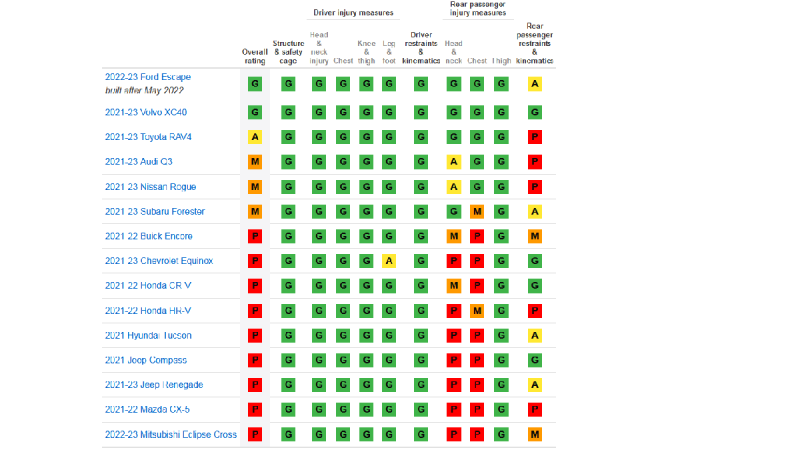We are all familiar now with the Insurance Institute For Highway Safety. They are the folks who conduct the most rigorous safety tests of automobiles in the U.S. To ensure that the vehicles we drive continue to get safer as time passes, IIHS is always coming up with new tests. The newest one tests the safety of rear seat passengers in a frontal crash.
This is an all-new test. No other agency in America has ever done it before. Why bother testing the safety of rear seat passengers? A couple of reasons. First, it’s where our kids usually sit. Second, with rideshare becoming a big part of how we travel, it’s nice to see IIHS shining a light on rear seat safety. “We’re excited to launch the first frontal crash test in the U.S. to include a rear-occupant dummy,” said IIHS Senior Research Engineer Marcy Edwards, who led the development of the new evaluation. “This is a fantastic opportunity to rapidly deliver big safety benefits by adapting technologies that we already know to be effective.”
“The original moderate overlap test was our first evaluation and the lynchpin of the Institute’s crash testing program,” said IIHS President David Harkey. “Thanks to automakers’ improvements, drivers in most vehicles are nearly 50 percent less likely to be killed in a frontal crash today than they were 25 years ago.”
IIHS tested a big group of the most popular SUVs in America. The Volvo XC40 earned the highest score, followed by the Ford Escape. Both are ranked Good. IIHS’s Harkey commented on their scores, saying, “Our updated test is a challenge to manufacturers to bring those same benefits to the back seat. The stellar performance of the Escape and XC40 shows it’s possible.”
The Toyota RAV4 scored Acceptable and is overall the third-safest among the vehicles tested. One big surprise was the Mazda CX-5 which scored Poor. Mazda has been the top performer with regard to new safety tests as of late.
The Subaru Forester and Nissan Rogue score marginal, and the Honda CR-V joined the CX-5 in scoring Poor. IIHS reported that in all nine poor-rated vehicles, injury measurements indicated high risks of head, neck, and chest injuries for the rear passenger, and the seat belt exerted excessive force on the chest of the second-row dummy.
Th new test is similar to the existing moderate frontal overlap test, with the exception that there is a dummy in the back seat. The test vehicle travels at 40 mph toward a barrier with a deformable face made of aluminum honeycomb. A Hybrid III dummy representing an average-size man is positioned in the driver's seat. Forty percent of the total width of the vehicle strikes the barrier on the driver's side. IIHS says that the forces in the test are similar to those resulting from a frontal offset crash between two vehicles of the same weight, each going just under 40 mph.
Find the full IIHS report here.
John Goreham is a long-time New England Motor Press Association member and recovering engineer. John's interest in EVs goes back to 1990 when he designed the thermal control system for an EV battery as part of an academic team. After earning his mechanical engineering degree, John completed a marketing program at Northeastern University and worked with automotive component manufacturers, in the semiconductor industry, and in biotech. In addition to Torque News, John's work has appeared in print in dozens of American news outlets and he provides reviews to many vehicle shopping sites. You can follow John on TikTok @ToknCars, on Twitter, and view his credentials at Linkedin
Re-Publication. If you wish to re-use this content, please contact Torque News for terms and conditions.
Rear seat crash test safety chart courtesy of IIHS.












